The Beginner’s Guide to start with Forex Trading: Key Steps to Get Started
Are you interested in exploring the world of Forex trading and how to start trading with forex ,but don’t know where to begin? Look no further! In this beginner’s guide, we will take you through the key steps to get started in the exciting and potentially lucrative world of Forex trading. Whether you’re a complete novice or have some basic knowledge, this guide will provide you with the essential information you need to navigate the Forex market with confidence. From understanding the basics of currency trading to choosing the right broker, setting up a trading account, and making your first trade, we’ve got you covered. You’ll also learn about essential trading strategies, risk management techniques, and how to stay updated on market trends. So, if you’re ready to embark on your Forex trading journey and unlock your potential for financial success, let’s dive in and discover the key steps to get started!
Understanding the Forex Market
The Forex market, also known as the foreign exchange market, is the largest and most liquid financial market in the world. It operates 24 hours a day, five days a week, and involves the buying and selling of currencies. Unlike other financial markets, such as the stock market, Forex trading does not have a centralized exchange. Instead, it is conducted over-the-counter (OTC), meaning that transactions are conducted electronically between participants through computer networks.
The Forex market is driven by a variety of factors, including economic data, geopolitical events, and market sentiment. Currency pairs are traded based on their relative value, with the first currency in the pair being the base currency and the second currency being the quote currency. For example, in the EUR/USD currency pair, the euro is the base currency, and the U.S. dollar is the quote currency. The exchange rate represents the value of one currency in terms of another and fluctuates based on supply and demand factors.
To be successful in Forex trading, it is essential to understand the dynamics of the market and the factors that influence currency prices. This knowledge will help you make informed trading decisions and capitalize on opportunities as they arise.
Key Players in the Forex Market
Several key players participate in the Forex market, each with their own motivations and influence on currency prices. to know how to start trading with forex you need to understand,The main players include central banks, commercial banks, institutional investors, corporations, and retail traders.
Central banks play a crucial role in the Forex market as they are responsible for formulating and implementing monetary policies. Their decisions regarding interest rates, money supply, and currency interventions can have a significant impact on currency valuations. Central bank interventions are often aimed at stabilizing currency fluctuations or achieving specific economic objectives.
Commercial banks are another major participant in the Forex market. They facilitate currency transactions for their clients, including corporations, institutional investors, and retail traders. Commercial banks provide liquidity to the market and profit from the spread between buying and selling prices.
Institutional investors, such as hedge funds, pension funds, and asset management firms, trade large volumes of currencies on behalf of their clients. Their trading activities can influence market trends and create opportunities for retail traders.
Corporations also participate in the Forex market to hedge against currency risks associated with international trade and investments.
Retail traders, like you and me, are individual traders who trade Forex through online platforms provided by brokers. Retail trading has become increasingly popular in recent years, thanks to the accessibility of online trading platforms and the availability of educational resources. Retail traders can take advantage of leverage to amplify their trading positions and potentially increase their profits. However, it’s important to note that leverage can also magnify losses, making risk management crucial for retail traders.
Benefits of Forex Trading
Forex trading offers several benefits that make it an attractive investment opportunity for individuals and institutions alike. Here are some of the key advantages of Forex trading:
- Liquidity: The Forex market is the most liquid financial market globally, with trillions of dollars traded daily. This high liquidity means that you can enter and exit trades quickly and at competitive prices.
- 24-Hour Market: Unlike other financial markets that have specific trading hours, the Forex market operates 24 hours a day, five days a week. This flexibility allows you to trade at any time, regardless of your location.
- High Leverage: Forex brokers offer leverage, which allows you to control larger positions with a relatively small amount of capital. This leverage enables you to amplify your potential profits. However, it’s important to use leverage responsibly and be aware of the associated risks.
- Diverse Trading Opportunities: The Forex market offers a wide range of currency pairs to trade, giving you the opportunity to diversify your portfolio and take advantage of different market conditions.
- Low Transaction Costs: Forex brokers typically charge low transaction costs, known as spreads, which are the differences between the buying and selling prices of currency pairs. This cost efficiency makes Forex trading accessible to traders of all sizes.
- Technical Analysis: Forex markets are well-suited for technical analysis, which involves analyzing historical price data and using chart patterns, indicators, and other tools to identify potential trading opportunities.
- Demo Accounts: Most Forex brokers offer demo accounts that allow you to practice trading with virtual money. This is a valuable feature for beginners to gain experience and test trading strategies without risking real capital.
Key Concepts in Forex Trading
Before you start trading Forex, it’s essential to familiarize yourself with some key concepts that will form the foundation of your trading knowledge. Here are a few important concepts to get you started:
Pip
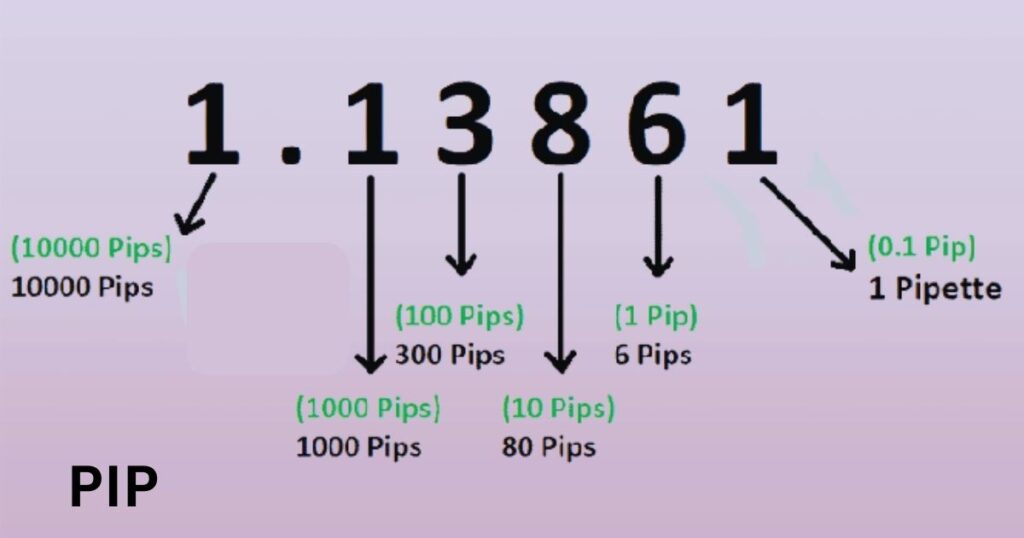


A pip, short for “percentage in point,” is the smallest unit of measurement in the Forex market. It represents the fourth decimal place in most currency pairs. For example, if the EUR/USD currency pair moves from 1.3000 to 1.3001, it has moved one pip.
Lot Size
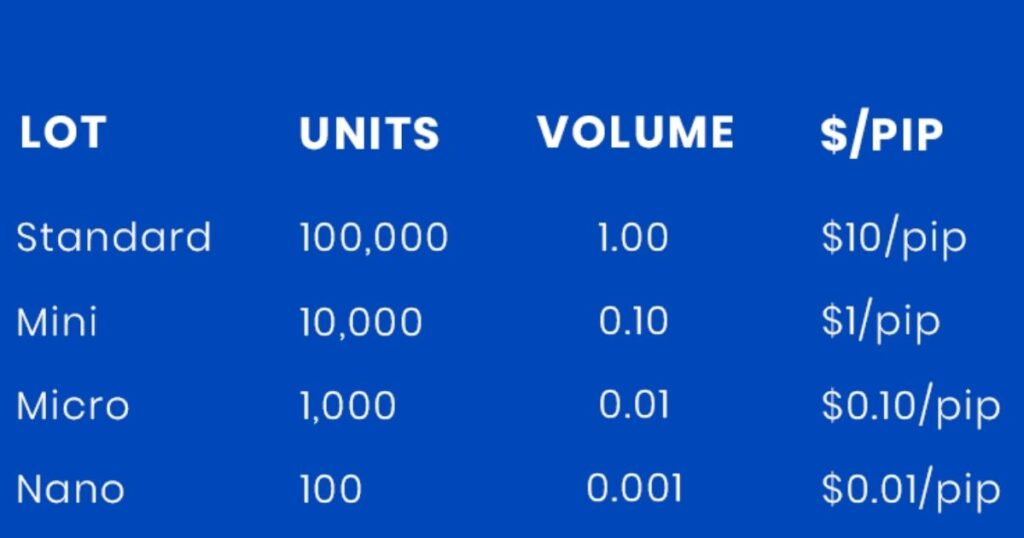


Lot size refers to the volume or quantity of a currency pair that you trade. Standard lot sizes in Forex trading are 100,000 units of the base currency. However, many brokers offer smaller lot sizes, such as mini lots (10,000 units) and micro lots (1,000 units), to accommodate traders with smaller account sizes.
Long and Short Positions
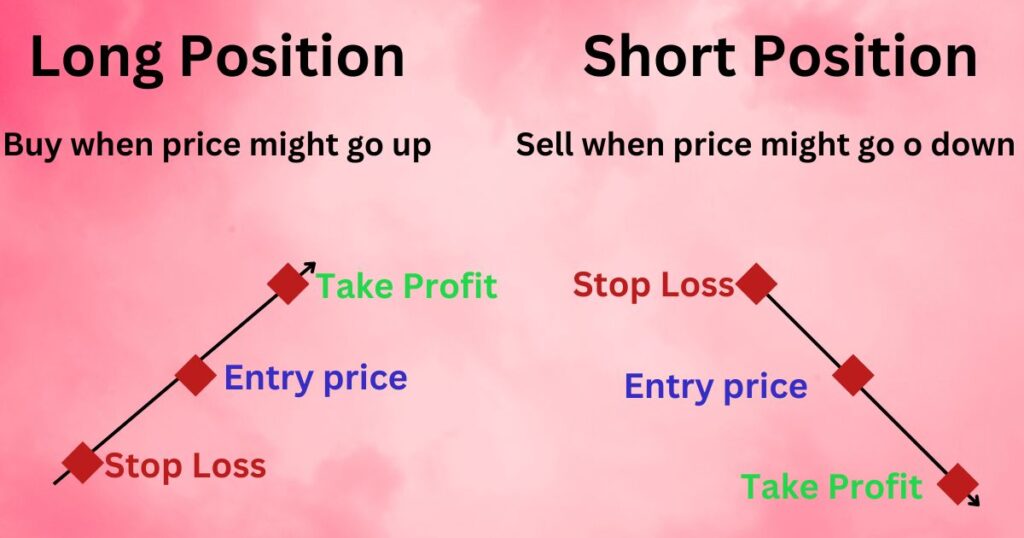


In Forex trading, you can take either a long or a short position. A long position involves buying a currency pair with the expectation that its value will rise. A short position, on the other hand, involves selling a currency pair with the expectation that its value will decline.
Margin



Margin is the amount of money required to open and maintain a trading position. It is a percentage of the total trade size and serves as collateral for any losses incurred. Margin allows you to control larger positions with a smaller amount of capital, thanks to leverage.
Stop Loss and Take Profit
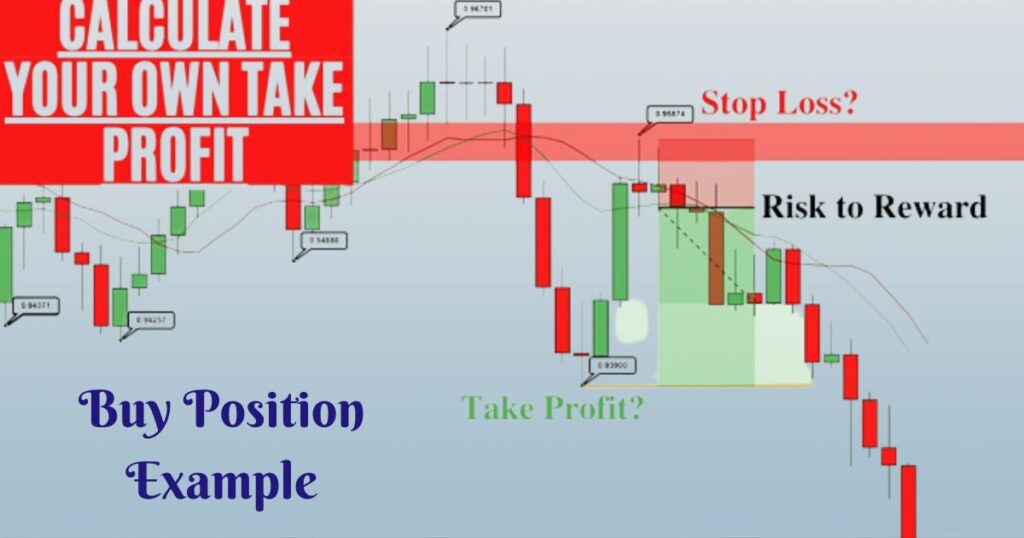


Stop loss and take profit orders are essential risk management tools in Forex trading. A stop loss order is placed to limit potential losses by automatically closing a trade if the market moves against you. A take profit order, on the other hand, is placed to secure profits by automatically closing a trade when a certain profit target is reached.
Choosing a Forex Broker
Choosing the right Forex broker is a crucial step in your Forex trading journey. A reputable and reliable broker can provide you with the necessary tools, resources, and support to trade successfully. Here are some factors to consider when selecting a Forex broker:
- Regulation: Ensure that the broker you choose is regulated by a reputable financial authority. Regulation helps protect your funds and ensures that the broker operates in a transparent and ethical manner.
- Trading Platforms: Evaluate the trading platforms offered by the broker. Look for user-friendly platforms with advanced charting and analysis tools. Mobile trading apps are also worth considering if you prefer to trade on the go.
- Spreads and Commissions: Compare the spreads and commissions charged by different brokers. Lower spreads and commissions can have a significant impact on your trading costs in the long run.
- Customer Support: Test the broker’s customer support to ensure it is responsive and helpful. You want a broker that provides timely assistance and resolves any issues or concerns promptly.
- Educational Resources: Look for brokers that offer educational resources, such as video tutorials, webinars, and trading guides. These resources can help you enhance your trading skills and stay updated on market trends.
- Demo Accounts: A demo account is an important feature for beginners to practice trading without risking real money. Check if the broker offers a demo account and whether it closely simulates real market conditions.
- Deposit and Withdrawal Options: Consider the deposit and withdrawal methods offered by the broker. Look for brokers that support convenient and secure payment options that suit your needs.
Remember to thoroughly research and compare different brokers before making a decision. It’s also a good idea to read reviews and seek recommendations from experienced traders to gain insights into a broker’s reputation and performance.
Setting Up a Forex Trading Account
Once you’ve chosen a Forex broker, the next step is to set up a trading account. Here’s a step-by-step guide to help you get started:
- Registration: Visit the broker’s website and click on the “Open Account” or “Register” button. Fill in the required personal information, such as your name, email address, and phone number.
- Verification: Depending on the broker’s requirements, you may need to verify your identity and address by submitting copies of your identification documents and proof of residence. This verification process is necessary to comply with anti-money laundering regulations.
- Account Type Selection: Choose the type of trading account that suits your needs. Brokers typically offer different account types, such as standard accounts, mini accounts, and Islamic accounts. Consider factors such as minimum deposit requirements, leverage options, and account features when making your selection.
- Deposit Funds: Once your account is verified, you can deposit funds into your trading account. Most brokers offer a variety of deposit methods, including bank transfers, credit/debit cards, and online payment systems.
- Platform Download: Download the trading platform provided by the broker. Ensure that the platform is compatible with your operating system and meets your trading requirements.
- Login: Launch the trading platform and log in using your account credentials. Familiarize yourself with the platform’s features and navigation.
- Practice Trading: If the broker offers a demo account, take advantage of it to practice trading strategies and get comfortable with the platform. Use the virtual money provided to simulate real trading conditions.
- Risk Management: Before you start trading with real money, it’s crucial to establish a risk management strategy. Determine how much capital you are willing to risk per trade and set appropriate stop loss and take profit levels.
- Start Trading: Once you feel confident in your trading skills, you can start trading with real money. Begin with small positions and gradually increase your trade sizes as you gain experience and develop profitable trading strategies.
Fundamental Analysis in Forex Trading
Fundamental analysis involves evaluating economic, social, and political factors that can impact currency prices. By analyzing these factors, traders can gain insights into the underlying forces driving the Forex market. Here are some key components of fundamental analysis:
- Economic Indicators: Economic indicators, such as GDP growth rates, inflation figures, and employment data, provide valuable information about a country’s economic performance. Positive economic indicators generally lead to a stronger currency, while negative indicators can weaken a currency.
- Interest Rates: Central banks use interest rates to control inflation and stimulate or cool down the economy. Higher interest rates attract foreign investors seeking higher returns, which can lead to a stronger currency. Conversely, lower interest rates can make a currency less attractive to investors.
- Geopolitical Events: Political instability, conflicts, and trade disputes can have a significant impact on currency prices. Pay attention to geopolitical events and how they may affect the economies and currencies of the countries involved.
- Central Bank Policies: Central bank decisions, such as changes in interest rates or monetary stimulus measures, can influence currency values. Stay updated on central bank announcements and monetary policy decisions.
- Market Sentiment: Market sentiment refers to the overall attitude and perception of market participants towards a particular currency. Positive sentiment can drive a currency’s value higher, while negative sentiment can lead to depreciation.
Fundamental analysis is a complex and ongoing process that requires staying informed about economic news, analyzing data releases, and understanding the interplay between various factors. It is often used in combination with technical analysis to make well-informed trading decisions.
Technical Analysis in Forex Trading
Technical analysis involves analyzing historical price data and using various tools and indicators to forecast future price movements. Traders who use technical analysis believe that historical price patterns and trends can repeat themselves, providing insights into future market behavior. Here are some key concepts and tools used in technical analysis:
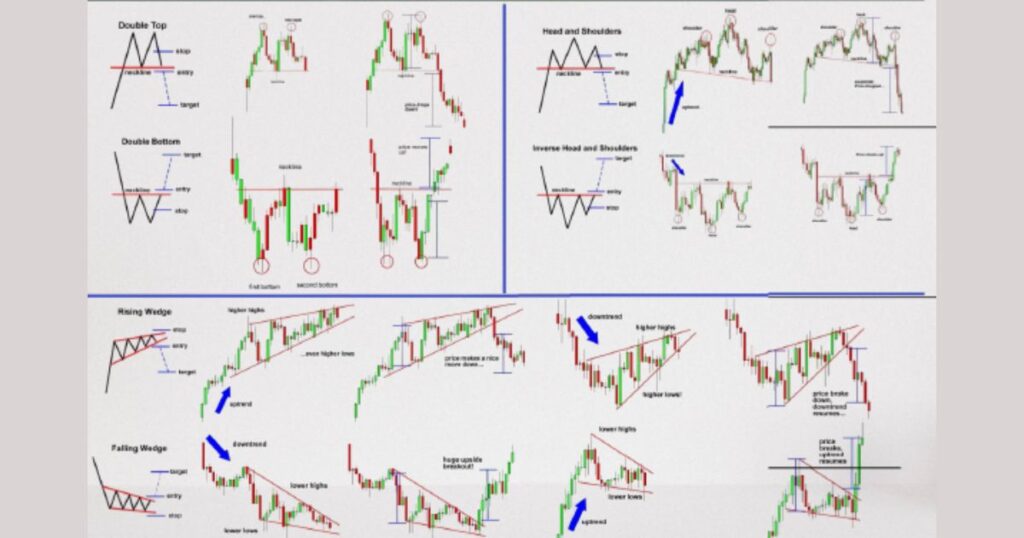


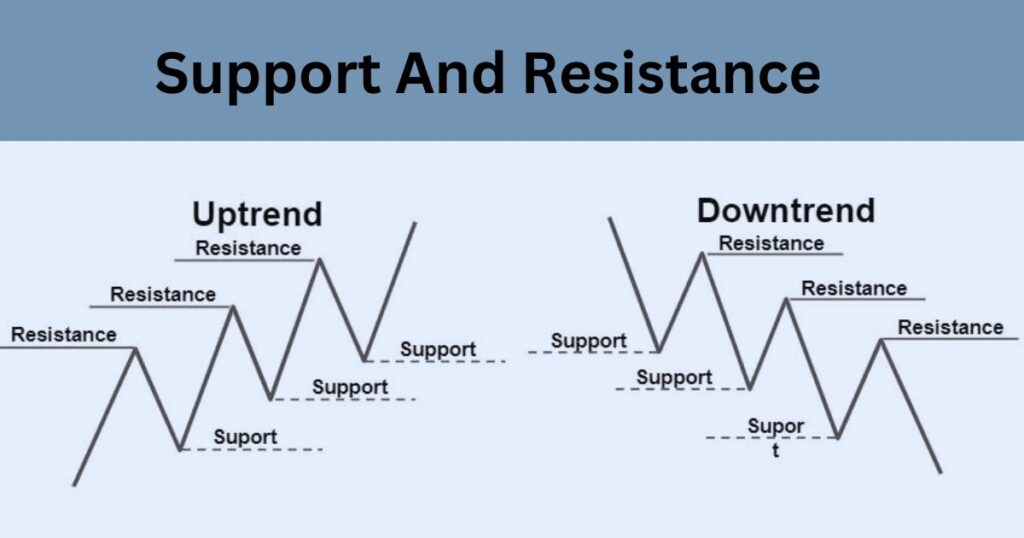


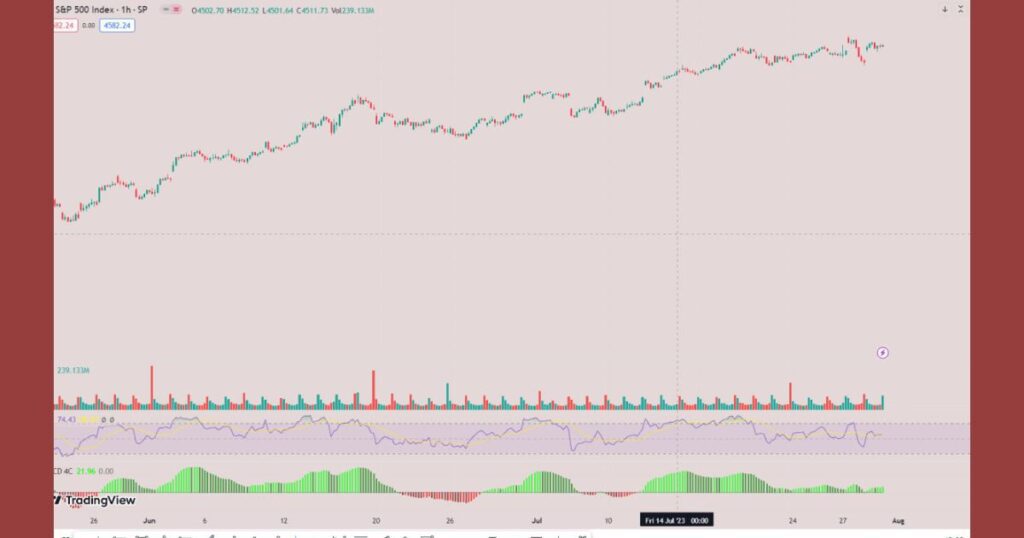


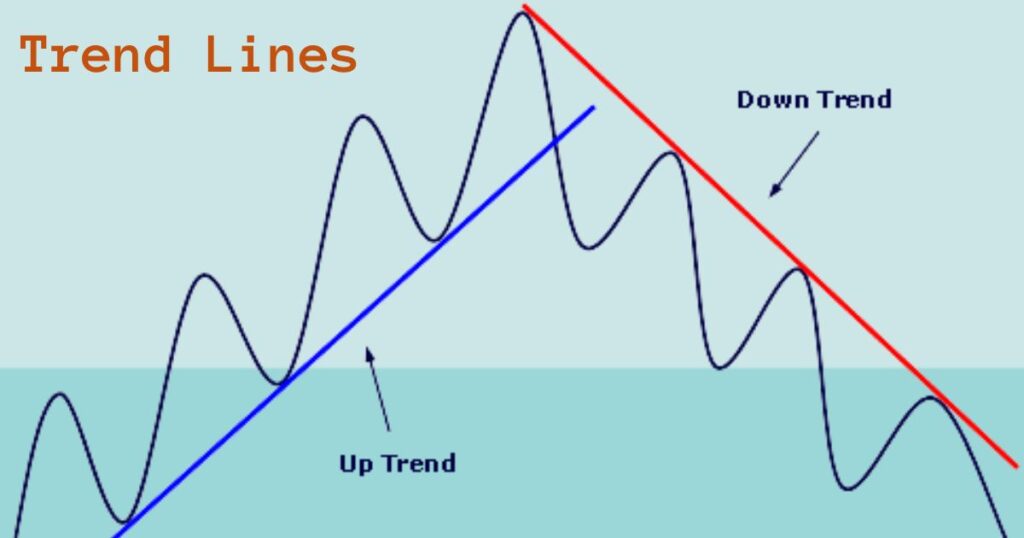


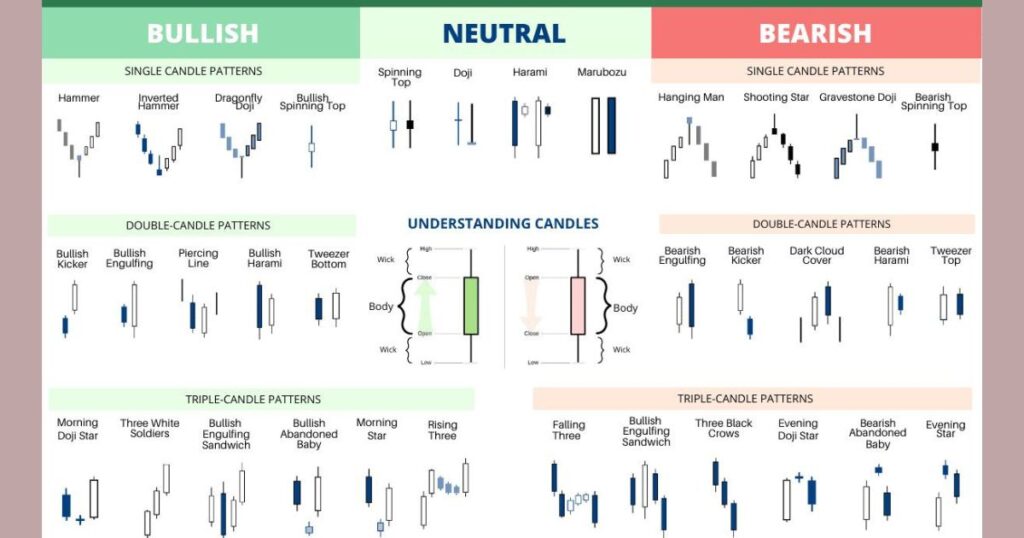


- Candlestick Charts: Candlestick charts display the open, high, low, and close prices for a specific time period. Traders analyze candlestick patterns to identify potential trend reversals, support and resistance levels, and market sentiment.
- Support and Resistance: Support levels are price levels where buying pressure is expected to outweigh selling pressure, causing prices to bounce back up. Resistance levels, on the other hand, are price levels where selling pressure is expected to outweigh buying pressure, causing prices to reverse downward.
- Trend Lines: Trend lines are lines drawn on a chart to connect higher lows (in an uptrend) or lower highs (in a downtrend). They help identify the direction of the market and potential areas of support or resistance.
- Indicators: Technical indicators are mathematical calculations based on historical price and volume data. They help traders identify potential trading opportunities and confirm or refute their trading hypotheses. Popular indicators include moving averages, relative strength index (RSI), and stochastic oscillator.
- Chart Patterns: Chart patterns, such as triangles, flags, and head and shoulders, provide visual representations of price movements. Traders look for these patterns to predict future price movements and make trading decisions.
By combining fundamental and technical analysis, traders can develop a well-rounded approach to Forex trading and increase their chances of making profitable trades.
Conclusion
Congratulations! You’ve reached the end of the beginner’s guide to Forex trading. We’ve covered the fundamentals of the Forex market, the key players involved, the benefits of trading Forex, and the essential concepts you need to understand before you start trading. Remember to choose a reputable broker, set up a trading account, and practice trading with a demo account before risking real money. Stay informed about market developments and continuously improve your trading skills to increase your chances of success.
FAQs
1. What is Forex trading?
Forex trading, also known as foreign exchange trading, involves buying and selling currencies in the global financial market to profit from fluctuations in exchange rates.
2. How can I get started with Forex trading?
To get started with Forex trading, you need to choose a reputable broker, set up a trading account, and practice trading with a demo account before trading with real money.
3. What are the key benefits of Forex trading?
Forex trading offers benefits such as high liquidity, 24-hour market access, high leverage, diverse trading opportunities, low transaction costs, and technical analysis capabilities.
4. How do I conduct fundamental analysis in Forex trading?
Fundamental analysis involves evaluating economic indicators, interest rates, geopolitical events, central bank policies, and market sentiment to gain insights into currency price movements.
5. What is technical analysis, and how does it help in Forex trading?
Technical analysis involves analyzing historical price data and using indicators, chart patterns, and trend lines to forecast future price movements and make trading decisions.
Deprecated: Creation of dynamic property Elementor\Includes\Elements\Container::$logical_dimensions_inline_start is deprecated in /home2/digiuq6v/trendbuzz.co.in/wp-content/plugins/elementor/includes/elements/container.php on line 42
Deprecated: Creation of dynamic property Elementor\Includes\Elements\Container::$logical_dimensions_inline_end is deprecated in /home2/digiuq6v/trendbuzz.co.in/wp-content/plugins/elementor/includes/elements/container.php on line 43
Deprecated: Creation of dynamic property Elementor\Includes\Elements\Container::$logical_dimensions_inline_start is deprecated in /home2/digiuq6v/trendbuzz.co.in/wp-content/plugins/elementor/includes/elements/container.php on line 42
Deprecated: Creation of dynamic property Elementor\Includes\Elements\Container::$logical_dimensions_inline_end is deprecated in /home2/digiuq6v/trendbuzz.co.in/wp-content/plugins/elementor/includes/elements/container.php on line 43
The Beginner’s Guide to start with Forex Trading: Key Steps to Get Started
Are you interested in exploring the world of Forex trading and how to start trading with forex ,but don’t know where to begin? Look no further! In this beginner’s guide, we will take you through the key steps to get started in the exciting and potentially lucrative world of Forex trading. Whether you’re a complete novice or have some basic knowledge, this guide will provide you with the essential information you need to navigate the Forex market with confidence. From understanding the basics of currency trading to choosing the right broker, setting up a trading account, and making your first trade, we’ve got you covered. You’ll also learn about essential trading strategies, risk management techniques, and how to stay updated on market trends. So, if you’re ready to embark on your Forex trading journey and unlock your potential for financial success, let’s dive in and discover the key steps to get started!
Understanding the Forex Market
The Forex market, also known as the foreign exchange market, is the largest and most liquid financial market in the world. It operates 24 hours a day, five days a week, and involves the buying and selling of currencies. Unlike other financial markets, such as the stock market, Forex trading does not have a centralized exchange. Instead, it is conducted over-the-counter (OTC), meaning that transactions are conducted electronically between participants through computer networks.
The Forex market is driven by a variety of factors, including economic data, geopolitical events, and market sentiment. Currency pairs are traded based on their relative value, with the first currency in the pair being the base currency and the second currency being the quote currency. For example, in the EUR/USD currency pair, the euro is the base currency, and the U.S. dollar is the quote currency. The exchange rate represents the value of one currency in terms of another and fluctuates based on supply and demand factors.
To be successful in Forex trading, it is essential to understand the dynamics of the market and the factors that influence currency prices. This knowledge will help you make informed trading decisions and capitalize on opportunities as they arise.
Key Players in the Forex Market
Several key players participate in the Forex market, each with their own motivations and influence on currency prices. to know how to start trading with forex you need to understand,The main players include central banks, commercial banks, institutional investors, corporations, and retail traders.
Central banks play a crucial role in the Forex market as they are responsible for formulating and implementing monetary policies. Their decisions regarding interest rates, money supply, and currency interventions can have a significant impact on currency valuations. Central bank interventions are often aimed at stabilizing currency fluctuations or achieving specific economic objectives.
Commercial banks are another major participant in the Forex market. They facilitate currency transactions for their clients, including corporations, institutional investors, and retail traders. Commercial banks provide liquidity to the market and profit from the spread between buying and selling prices.
Institutional investors, such as hedge funds, pension funds, and asset management firms, trade large volumes of currencies on behalf of their clients. Their trading activities can influence market trends and create opportunities for retail traders.
Corporations also participate in the Forex market to hedge against currency risks associated with international trade and investments.
Retail traders, like you and me, are individual traders who trade Forex through online platforms provided by brokers. Retail trading has become increasingly popular in recent years, thanks to the accessibility of online trading platforms and the availability of educational resources. Retail traders can take advantage of leverage to amplify their trading positions and potentially increase their profits. However, it’s important to note that leverage can also magnify losses, making risk management crucial for retail traders.
Benefits of Forex Trading
Forex trading offers several benefits that make it an attractive investment opportunity for individuals and institutions alike. Here are some of the key advantages of Forex trading:
- Liquidity: The Forex market is the most liquid financial market globally, with trillions of dollars traded daily. This high liquidity means that you can enter and exit trades quickly and at competitive prices.
- 24-Hour Market: Unlike other financial markets that have specific trading hours, the Forex market operates 24 hours a day, five days a week. This flexibility allows you to trade at any time, regardless of your location.
- High Leverage: Forex brokers offer leverage, which allows you to control larger positions with a relatively small amount of capital. This leverage enables you to amplify your potential profits. However, it’s important to use leverage responsibly and be aware of the associated risks.
- Diverse Trading Opportunities: The Forex market offers a wide range of currency pairs to trade, giving you the opportunity to diversify your portfolio and take advantage of different market conditions.
- Low Transaction Costs: Forex brokers typically charge low transaction costs, known as spreads, which are the differences between the buying and selling prices of currency pairs. This cost efficiency makes Forex trading accessible to traders of all sizes.
- Technical Analysis: Forex markets are well-suited for technical analysis, which involves analyzing historical price data and using chart patterns, indicators, and other tools to identify potential trading opportunities.
- Demo Accounts: Most Forex brokers offer demo accounts that allow you to practice trading with virtual money. This is a valuable feature for beginners to gain experience and test trading strategies without risking real capital.
Key Concepts in Forex Trading
Before you start trading Forex, it’s essential to familiarize yourself with some key concepts that will form the foundation of your trading knowledge. Here are a few important concepts to get you started:
Pip



A pip, short for “percentage in point,” is the smallest unit of measurement in the Forex market. It represents the fourth decimal place in most currency pairs. For example, if the EUR/USD currency pair moves from 1.3000 to 1.3001, it has moved one pip.
Lot Size



Lot size refers to the volume or quantity of a currency pair that you trade. Standard lot sizes in Forex trading are 100,000 units of the base currency. However, many brokers offer smaller lot sizes, such as mini lots (10,000 units) and micro lots (1,000 units), to accommodate traders with smaller account sizes.
Long and Short Positions



In Forex trading, you can take either a long or a short position. A long position involves buying a currency pair with the expectation that its value will rise. A short position, on the other hand, involves selling a currency pair with the expectation that its value will decline.
Margin



Margin is the amount of money required to open and maintain a trading position. It is a percentage of the total trade size and serves as collateral for any losses incurred. Margin allows you to control larger positions with a smaller amount of capital, thanks to leverage.
Stop Loss and Take Profit



Stop loss and take profit orders are essential risk management tools in Forex trading. A stop loss order is placed to limit potential losses by automatically closing a trade if the market moves against you. A take profit order, on the other hand, is placed to secure profits by automatically closing a trade when a certain profit target is reached.
Choosing a Forex Broker
Choosing the right Forex broker is a crucial step in your Forex trading journey. A reputable and reliable broker can provide you with the necessary tools, resources, and support to trade successfully. Here are some factors to consider when selecting a Forex broker:
- Regulation: Ensure that the broker you choose is regulated by a reputable financial authority. Regulation helps protect your funds and ensures that the broker operates in a transparent and ethical manner.
- Trading Platforms: Evaluate the trading platforms offered by the broker. Look for user-friendly platforms with advanced charting and analysis tools. Mobile trading apps are also worth considering if you prefer to trade on the go.
- Spreads and Commissions: Compare the spreads and commissions charged by different brokers. Lower spreads and commissions can have a significant impact on your trading costs in the long run.
- Customer Support: Test the broker’s customer support to ensure it is responsive and helpful. You want a broker that provides timely assistance and resolves any issues or concerns promptly.
- Educational Resources: Look for brokers that offer educational resources, such as video tutorials, webinars, and trading guides. These resources can help you enhance your trading skills and stay updated on market trends.
- Demo Accounts: A demo account is an important feature for beginners to practice trading without risking real money. Check if the broker offers a demo account and whether it closely simulates real market conditions.
- Deposit and Withdrawal Options: Consider the deposit and withdrawal methods offered by the broker. Look for brokers that support convenient and secure payment options that suit your needs.
Remember to thoroughly research and compare different brokers before making a decision. It’s also a good idea to read reviews and seek recommendations from experienced traders to gain insights into a broker’s reputation and performance.
Setting Up a Forex Trading Account
Once you’ve chosen a Forex broker, the next step is to set up a trading account. Here’s a step-by-step guide to help you get started:
- Registration: Visit the broker’s website and click on the “Open Account” or “Register” button. Fill in the required personal information, such as your name, email address, and phone number.
- Verification: Depending on the broker’s requirements, you may need to verify your identity and address by submitting copies of your identification documents and proof of residence. This verification process is necessary to comply with anti-money laundering regulations.
- Account Type Selection: Choose the type of trading account that suits your needs. Brokers typically offer different account types, such as standard accounts, mini accounts, and Islamic accounts. Consider factors such as minimum deposit requirements, leverage options, and account features when making your selection.
- Deposit Funds: Once your account is verified, you can deposit funds into your trading account. Most brokers offer a variety of deposit methods, including bank transfers, credit/debit cards, and online payment systems.
- Platform Download: Download the trading platform provided by the broker. Ensure that the platform is compatible with your operating system and meets your trading requirements.
- Login: Launch the trading platform and log in using your account credentials. Familiarize yourself with the platform’s features and navigation.
- Practice Trading: If the broker offers a demo account, take advantage of it to practice trading strategies and get comfortable with the platform. Use the virtual money provided to simulate real trading conditions.
- Risk Management: Before you start trading with real money, it’s crucial to establish a risk management strategy. Determine how much capital you are willing to risk per trade and set appropriate stop loss and take profit levels.
- Start Trading: Once you feel confident in your trading skills, you can start trading with real money. Begin with small positions and gradually increase your trade sizes as you gain experience and develop profitable trading strategies.
Fundamental Analysis in Forex Trading
Fundamental analysis involves evaluating economic, social, and political factors that can impact currency prices. By analyzing these factors, traders can gain insights into the underlying forces driving the Forex market. Here are some key components of fundamental analysis:
- Economic Indicators: Economic indicators, such as GDP growth rates, inflation figures, and employment data, provide valuable information about a country’s economic performance. Positive economic indicators generally lead to a stronger currency, while negative indicators can weaken a currency.
- Interest Rates: Central banks use interest rates to control inflation and stimulate or cool down the economy. Higher interest rates attract foreign investors seeking higher returns, which can lead to a stronger currency. Conversely, lower interest rates can make a currency less attractive to investors.
- Geopolitical Events: Political instability, conflicts, and trade disputes can have a significant impact on currency prices. Pay attention to geopolitical events and how they may affect the economies and currencies of the countries involved.
- Central Bank Policies: Central bank decisions, such as changes in interest rates or monetary stimulus measures, can influence currency values. Stay updated on central bank announcements and monetary policy decisions.
- Market Sentiment: Market sentiment refers to the overall attitude and perception of market participants towards a particular currency. Positive sentiment can drive a currency’s value higher, while negative sentiment can lead to depreciation.
Fundamental analysis is a complex and ongoing process that requires staying informed about economic news, analyzing data releases, and understanding the interplay between various factors. It is often used in combination with technical analysis to make well-informed trading decisions.
Technical Analysis in Forex Trading
Technical analysis involves analyzing historical price data and using various tools and indicators to forecast future price movements. Traders who use technical analysis believe that historical price patterns and trends can repeat themselves, providing insights into future market behavior. Here are some key concepts and tools used in technical analysis:















- Candlestick Charts: Candlestick charts display the open, high, low, and close prices for a specific time period. Traders analyze candlestick patterns to identify potential trend reversals, support and resistance levels, and market sentiment.
- Support and Resistance: Support levels are price levels where buying pressure is expected to outweigh selling pressure, causing prices to bounce back up. Resistance levels, on the other hand, are price levels where selling pressure is expected to outweigh buying pressure, causing prices to reverse downward.
- Trend Lines: Trend lines are lines drawn on a chart to connect higher lows (in an uptrend) or lower highs (in a downtrend). They help identify the direction of the market and potential areas of support or resistance.
- Indicators: Technical indicators are mathematical calculations based on historical price and volume data. They help traders identify potential trading opportunities and confirm or refute their trading hypotheses. Popular indicators include moving averages, relative strength index (RSI), and stochastic oscillator.
- Chart Patterns: Chart patterns, such as triangles, flags, and head and shoulders, provide visual representations of price movements. Traders look for these patterns to predict future price movements and make trading decisions.
By combining fundamental and technical analysis, traders can develop a well-rounded approach to Forex trading and increase their chances of making profitable trades.
Conclusion
Congratulations! You’ve reached the end of the beginner’s guide to Forex trading. We’ve covered the fundamentals of the Forex market, the key players involved, the benefits of trading Forex, and the essential concepts you need to understand before you start trading. Remember to choose a reputable broker, set up a trading account, and practice trading with a demo account before risking real money. Stay informed about market developments and continuously improve your trading skills to increase your chances of success.
FAQs
1. What is Forex trading?
Forex trading, also known as foreign exchange trading, involves buying and selling currencies in the global financial market to profit from fluctuations in exchange rates.
2. How can I get started with Forex trading?
To get started with Forex trading, you need to choose a reputable broker, set up a trading account, and practice trading with a demo account before trading with real money.
3. What are the key benefits of Forex trading?
Forex trading offers benefits such as high liquidity, 24-hour market access, high leverage, diverse trading opportunities, low transaction costs, and technical analysis capabilities.
4. How do I conduct fundamental analysis in Forex trading?
Fundamental analysis involves evaluating economic indicators, interest rates, geopolitical events, central bank policies, and market sentiment to gain insights into currency price movements.
5. What is technical analysis, and how does it help in Forex trading?
Technical analysis involves analyzing historical price data and using indicators, chart patterns, and trend lines to forecast future price movements and make trading decisions.

